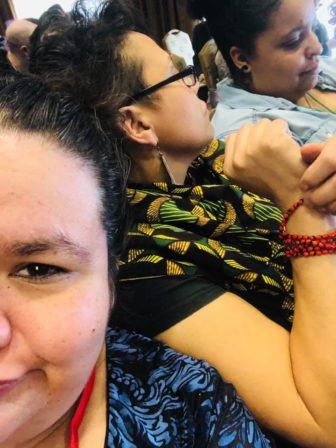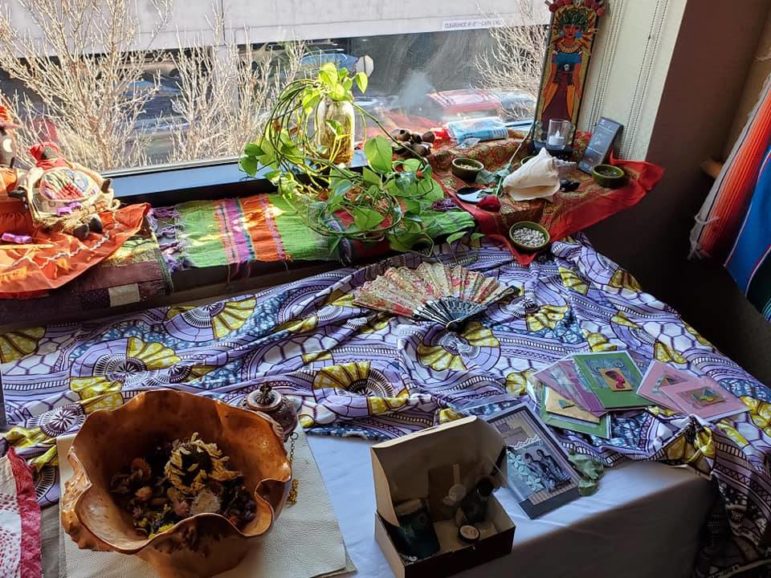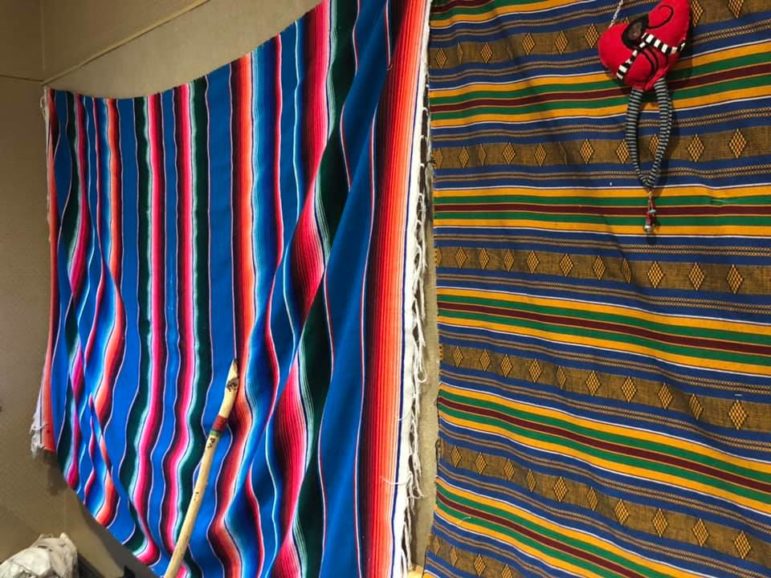
Recently I attended a conference that centered around issues of equity and inclusion for under-represented groups in education. Workshops looked at underlying factors as to why recruitment, retention, and increasing numbers for minority groups remain a source of concern decades after initial attempts to solve underlying problems of representation. During the conference, I kept thinking of similarities between issues presented for academics and those raised at a panel I moderated at Mystic South last year, “Navigating the Waters as a Pagan of Color in 2018.” The audience there asked the same questions as the academics surrounding me at this conference: how can our group find, welcome, and keep people of color?
Just as some institutions look to reflect not just the pool of available Ph.D.s, but the larger demographic balance of the United States, there are groups that want to be home for those who are seeking to find what each group has to offer.
While some recent conversations in Pagan circles may cover questions around race, and specifically the issue of whiteness in the larger community, the dilemma, and perhaps the solution, remains the same for our decentralized community of Pagans, Heathens, Polytheists, and others, as it does for the academic community. The only differences lie in not addressing these concerns in a national forum on a yearly basis where every workshop and speaker focuses solely on issues of equity and inclusion. While there are differences between proposing equity and inclusion solutions for centralized academic institutions and finding similar solutions for the largely decentralized Pagan, Heathen, and Polytheist communities, there is enough overlap to consider these ideas.
Visibility
At the most recent Paganicon, local Pagans gathered to welcome visitors to the Pagans of Color and Culture suite, one of the many rooms that held programming representative of the various groups in the community outside the official Paganicon schedule. The room was intended “to highlight and lift the experiences of People of Color and the many paths they walk through out the pagan community. We seek to provide a safe space for pagans of color and their allies, while providing a spiritual and learning atmosphere.” Despite the presence of similar suites in past years, this year saw increased levels of interest and a recognition of the reality that there were more Pagans of color hanging out at Paganicon as a whole.

Family relaxing in the Pagans of Color and Culture Suite, Paganicon 2019 [courtesy Pagans of Color and Culture Suite].
With visibility comes the good-natured, but often mistaken, idea that white people (non-people of color) are not welcome into the space because it is a safe haven for Pagans of color. In fact, the opposite is true, as those who stopped by at various times found out. Allies and those who want to know more about Pagans of color have always been welcome to join and help spread the conversation. Many dropped by to see the altars, to enjoy the food, to participate in classes, to join the ancestor ritual on Saturday evening, the potluck on Saturday night, and to enjoy conversations throughout the weekend on with those present in the room.
In the warm atmosphere, more than one person noted how few, if any, Pagans of color are seen at a variety of festivals, conventions, and conferences. Each person was pleased to see that there was a presence at Paganicon and that all were welcome. The reality that such a statement needed to be made repeatedly by various visitors demonstrates how visibility for those of color who are present in the community is critical.

Altar at the Pagans of Color and Culture Suite-Paganicon 2019 [courtesy Pagans of Color and Culture].
Two Questions: How did you end up here? Why did you stay here?
Within the larger Pagan, Heathen, and Polytheist communities, these questions may arise from new arrivals who wish to determine if they have found a safe space to make a spiritual or group home. These questions are even more relevant for groups looking to recruit more individuals of color. How one decides upon a group is a very personal decision, sometimes impacted by or directed by connections with particular deities, geographic necessity, or a simple lack of alternatives.
For an individual of color seeking a group that follows a particular faith, there may not be much of a choice at all: if that tradition only has one active group in the area, there is no other option for someone who wants to participate in group rituals. Likewise, one may also find that there are a number of groups who would welcome new members, but those groups do not know who is looking for them. In some cases, groups may not know how to demonstrate openness for interested persons of color.
The presence of “spiritual deserts” in the United States is quite real; furthermore, there are still the usual hazards regarding safety in a person’s decision to reveal their affiliation or desire to connect with non-Christian religious communities. In spiritual deserts, being labeled as “other” or non-Christian can affect where it is safe to live, work, and send children to school. These norms already drive many into solitary practice, making it harder for prospective Pagans of color to find those who are like-minded.

Altar at tbe Pagans of Color and Culture Suite, Paganicon 2019 [courtesy Pagans of Color and Culture Suite].
It is through conventions and conferences, where people gather in neutral newfound communities, where these questions can be asked and discussed openly. For Pagans, Heathens, and Polytheists of color, these are spaces for networking and for finding groups that can give answers to the larger questions of how those who are a part of a certain group found it and why those same individuals stayed. Such questions require a willingness to trust, to share knowledge, and to demonstrate acceptance. Sometimes, the conversations may lead to painful and difficult revelations, which may lead to new members. If the question of how to find and keep persons of color in various Pagan, Heathen, and Polytheist groups keeps getting asked, by different people, in various forums, then there is a reason why the issue remains important.
Two More Questions: Who is leaving? Why did they leave?
These are harder questions, due in part to the decentralized nature of the larger Pagan, Heathen, and Polytheist communities. Faith, religious practice, and spiritual paths fall into the personal category for many, and word of mouth or gossip is not an effective measure of knowing why someone who spent time in the community has suddenly chosen to leave that community.
Is it a matter of identification? There are individuals of color who no longer wish to be considered Pagan, Heathen, or Polytheist, even though they may participate in certain faith traditions. If this is the case, then there is nothing a group can do to change this feeling, especially if the group identifies as 100% Pagan, Heathen, or Polytheist.
Is it a matter of treatment in another group? This can only be discovered over time, with deep trust and acceptance on all sides. In addition, it is the person who left who experienced the trauma; for that person to be open to a joining a new group can be a priceless gift. For groups that want to add persons of color to their numbers, the revelation of trauma by an individual and the acceptance that such trauma can influence how the person of color sees groups of a particular tradition in the larger community is crucial. Again, due to the decentralized nature of the larger community, stories may be spread, but only the individual knows the complete story.
There are many reasons why any individual might choose to leave a particular tradition, and it is important to know what these reasons at some point as we grow numbers of all who wish to join the larger community.
Barring death, the reasons why individuals choose to stop practicing a tradition, drop from membership in the larger community, or reject a formerly robust identity as a Pagan, Heathen, or Polytheist remain private and rarely known. This leaves it up to small one-on-one or group conversations to ask persons of color if they have left, why they left, and what prevents them from coming back.
Areas of Action: Being Reactive or Proactive?
While one strength of the Pagan community is its focus on decentralization, this can lead to a tendency to react to larger issues that may affect the community rather than taking a proactive stance. Given the choice between being reactive and proactive, the community benefits most from a proactive stance that allows the most flexibility and strength for long-term benefits.
Strategic Planning
While the larger Pagan community does not have centralized units and a hierarchical structure, some traditions do. Even smaller groups can benefit from planning how much, if any, of an emphasis needs to be made for drawing in new members of color and for participation in efforts to increase equity and inclusion. Is there a liaison for connection with persons of color in the larger community? This can range from public acknowledgement and participation in events, workshops, and programs at conferences and conventions to creating forums to address the issue at the local community level. The biggest component of strategic planning is follow-through.
Internal Processes
Each group, whether coven, grove, circle, or kindred, has its own rules and methods for membership, lessons, initiation, and fellowship. If a group wishes to look at how welcoming it is overall toward persons of color, then the place to start is with its own internal processes. What is written and put into place regarding all aspects of the group? Are there accepted processes and standards that are unwritten? Are actions taken just because one person says so? What are the quality control measures, if any, to ensure openness and transparency to all members, including prospective members? If a group is not at this level, then now is the time to have in-depth and perhaps painful conversations to work towards transparency and processes that accurately reflect the group, its purpose, mission, and goals.
Review criteria
These go hand-in-hand with an overall look at the internal processes of a group at all levels. This means not just from the top down, but from the lower levels up. In addition to policies at each level of the group, it is helpful to keep data for an objective look at where the group presently stands, and where it is going. If the goal is to bring in new members, including members of color, then this would be the place or time at a meeting to note any efforts to do so.
Transparency
Are processes visible to everyone? This does not mean initiatory or lesson-work, but if there are steps that should normally be taken in a group, are these clear to all who are members of the group and those who are visitors or prospective members? This would also include news, both good and bad, about the group. How many times has a particular scandal broken with the only public information being speculation, rather than transparent facts or notifications? A group’s public image can be harmed or improved through vigorous transparency; however, the choice to do the wrong thing out of convenience or expediency will do even more damage in the end.
Leadership
If a group or tradition is seeking this type of change, then the presence and support of leadership is crucial. If a group has a sister or brother coven, grove, kindred, circle, or house, then it is important to know where and how it stands on welcoming members of color. This is not to say that each group should be identical; however, as many groups socialize with each other, the differences might be glaring if one group is trying hard to welcome new members of color, while the others don’t support the effort.
As an academic and as a Pagan of color, I see these steps as just a few of the potential solutions for a large scale endeavor that will require a great deal of time, input from a variety of sources, and hard work on all sides. The issue of recruitment, retention, and advancement for persons of color in the academic arena is one that is not dissimilar to what is happening in the decentralized Pagan, Heathen, and Polytheist communities. As an optimist, I do not think that it is ever too late to start the process or to revive one that has been left in limbo. In both types of communities, although it is easy to fall into a chasm of silence on the subject, leadership and the way forward will continue to be designated by those who have influence and power, trust and acceptance.

Blankets hung in the Pagans of Color and Culture Suite, Paganicon 2019 [courtesy Pagans of Color and Culture Suite].
The Wild Hunt is not responsible for links to external content.
To join a conversation on this post:
Visit our The Wild Hunt subreddit! Point your favorite browser to https://www.reddit.com/r/The_Wild_Hunt_News/, then click “JOIN”. Make sure to click the bell, too, to be notified of new articles posted to our subreddit.
